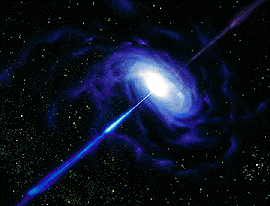
| DATE | Lecture 21 |
| TITLE | Quasars and Active Galactic Nuclei |
| READING | Chapter 17 |
| MAIN CONCEPTS | Types of Active Galactic Nuclei, Radio Jets, Quasars |

These galaxies are known as AGN (Active Galactic Nuclei) because of their extremely active cores. At the core of these galaxies are supermassive black holes, with a typical mass of 108 solar masses, which supply the gravitational energy source required to fuel the immense activity of the core. Most galaxies now appear to have massive black holes at their center; it seems that the mass of the black hole scales with the mass of the galactic bulge. Active galaxies are those in which the black hole is being fed; the conversion of gravitational potential energy to radiation can approach 10% efficiency - much better than nuclear fusion! When the fuel supply runs out the galactic nucleus is quiet, but the hole still lurks there.
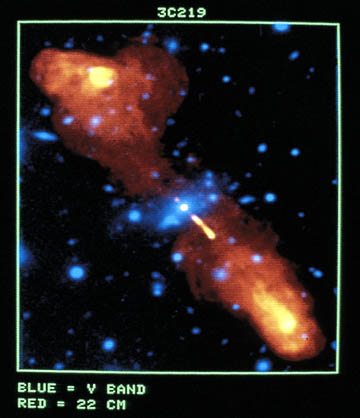
Active galactic nuclei that produces radio lobes, which are the dominant feature of the galaxy, that span a distance thousands of times greater than the galaxy itself. These radio lobes,typically two) are on opposite ends of the galaxy eminating from the jet stream of particles flowing out of the accretion disk around the black hole. The jet stream is traveling nearly the speed of light creating the condition necessary for producing synchrotron radiation which is responsible for the intense radio emissions. The jet probably arises because of intense magnetic fields being twisted around near the hole. The mechanism is probably similar to that which produces bipolar outflows around newly-forming stars, but on a much larger and more energetic scale.
Quasars(Quasi-stellar objects)
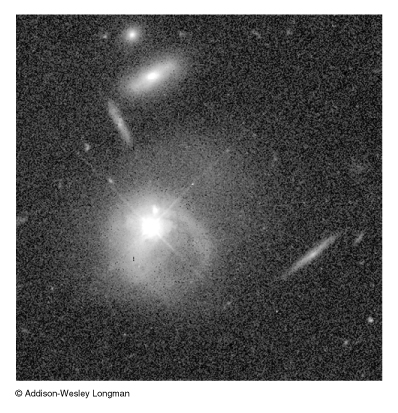
The
most luminous object in the Universe given its compact size. They
are also amongst the most distant objects in the Universe, which leads
to the conclusion that their existence was more prominent in the Early
Universe than it is today. An upper limit on the scale of these objects
can be determined by measuring the time between variations the object's
brightness based on the condition that an object cannot be larger than
the distance it takes light to travel across its diameter. The typical
variation in brightness for a Quasar is a week, which implies that the
object cannot be larger than a light week across because if it were any
bigger, the variation in light should have taken more time to communicate
with another part of the Quasar.
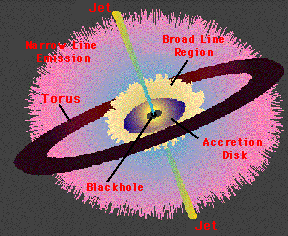
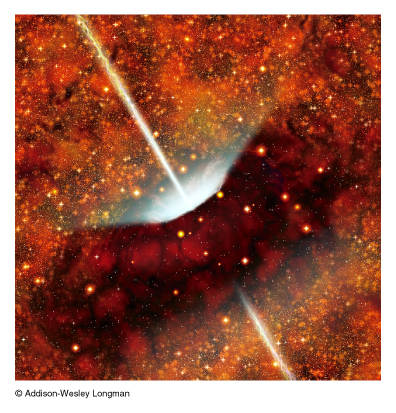
We now
understand lots of different objects to all be manifestations of AGN. Quasars
are those so distant that all we can see is the bright nucleus. If we see
the galaxy too, it is called a "Seyfert Type 1" galaxy. If we are looking
right down the jet, it is called a "blazar". At a slight angle it is a
"BL Lac object". Sometimes the torus obscures the nucleus altogether, and
we have a "Seyfert Type II".